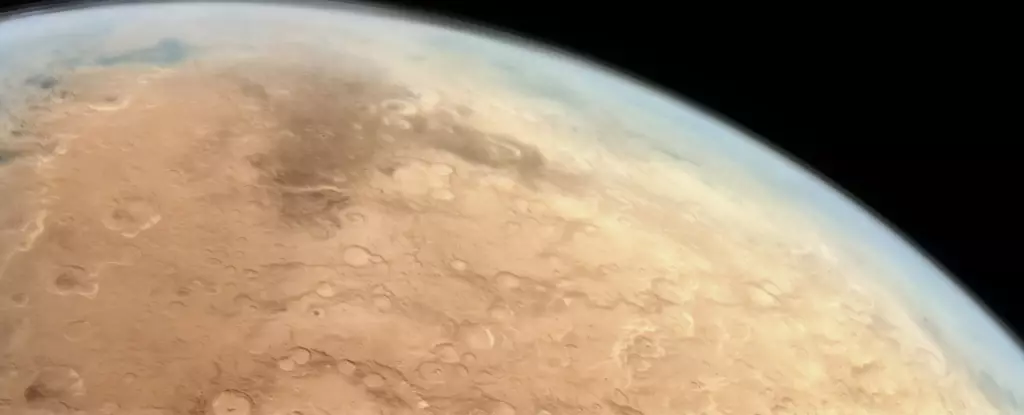Mars has long captivated humanity’s imagination as the potential neighbor capable of supporting life. Yet, despite sharing similarities with Earth, the Red Planet remains a barren, frozen wasteland, distinctly uninhabitable. This dichotomy prompts a fundamental question: why did Mars fail to sustain life, while Earth naturally fostered thriving ecosystems? Recent discoveries from NASA’s rovers have begun to shed light on this enigma. By examining the planet’s geological and atmospheric history, scientists are unraveling the complex interplay of factors that transformed Mars from a once-watery world into an enduring desert.
From ancient riverbeds to dried-up lakes, Mars’ geological record hints at episodic flows of liquid water—an essential ingredient for life. However, these fleeting episodes were insufficient to create conditions conducive to sustained biological activity. NASA’s Curiosity rover uncovered mineral deposits known as carbonates, which are crucial markers of past water presence and atmospheric interactions. These carbonates on Mars function like Earth’s limestone, trapping atmospheric carbon dioxide and indicating that the planet once experienced periodic warm conditions, albeit limited in scope and duration. The imperative question remains: why was this window of habitability so ephemeral?
The Imbalance of Planetary Climate and the Role of Volcanism
Analyzing Mars’ atmospheric history reveals an important insight: the planet never developed a stable, life-supporting climate. Unlike Earth, which enjoys a balanced cycle with volcanic activity constantly recycling carbon dioxide—a greenhouse gas that ensures moderate temperatures—Mars’s volcanic outgassing was feeble and infrequent. This weak geological activity failed to replenish atmospheric CO₂ levels, resulting in a cold, inhospitable environment that could not sustain liquid water for long. Essentially, Mars lacked the dynamic geological processes that create and maintain a stable climate over millions of years.
Scientists now understand that without sufficient greenhouse gases in its atmosphere, Mars could not trap enough heat to sustain lakes or rivers. This climatic failure meant that any liquid water that did exist would evaporate or freeze rapidly, leaving behind the dry, rocky surface we observe today. Additionally, the planet’s thinner atmosphere made it vulnerable to solar wind stripping, further exacerbating atmospheric loss over geological time. As a result, what could have been a cradle for early life was rapidly turned into an endless desert.
Fate of Water and the Search for Hidden Reservoirs
The question of whether microorganisms ever sparked life on Mars remains open, largely because of the planet’s lost watery environments. While surface water is largely gone, there is mounting speculation that pockets of liquid water might still exist beneath the surface. Peroxide and brine deposits, along with recent rover findings, hint at the possibility of isolated, subsurface reservoirs that could harbor microbial life—if such life ever existed in the first place.
The pursuit of this buried water is at the forefront of current Martian exploration. NASA’s Perseverance rover has identified dried-up lakebeds and carbonate deposits, indicating that water once filled the planet’s basins. These findings spark hope that, if we analyze more samples, we might find chemical signatures of past life or conditions favorable for microbial activity. The challenge lies in retrieving these samples and bringing them back to Earth—an endeavor that international space agencies are fiercely pursuing with renewed urgency.
The Future of Martian Exploration and Humanity’s Perspective
A critical step towards understanding Mars’s history involves comparing extraterrestrial geology with terrestrial records. Earth’s robust volcanic activity and rich rock record have enabled scientists to construct detailed climate models and understand the processes that support life. Mars’s sparse geological record, by contrast, limits our understanding but also underscores the critical importance of volcanic and atmospheric dynamics in fostering habitability.
If future missions confirm that Mars never fostered even microbial life, this could profoundly influence our understanding of life’s rarity in the universe. Conversely, discovering evidence of ancient life would revolutionize our worldview, suggesting that life might be more common than previously thought. This realization would bolster the argument that the origin of life depends on a delicate but achievable set of planetary conditions—conditions that Earth managed to maintain but Mars failed to sustain.
As humanity’s technological capabilities expand—including the return of Martian rock samples—our understanding of planetary habitability will sharpen. The next decade holds the potential to answer whether Mars is a cosmic accident or a testament to the fragility of life-supporting worlds. Either way, the quest to comprehend Mars’s barren landscape reflects humanity’s relentless drive to decipher our universe’s deepest mysteries and our place within it.

